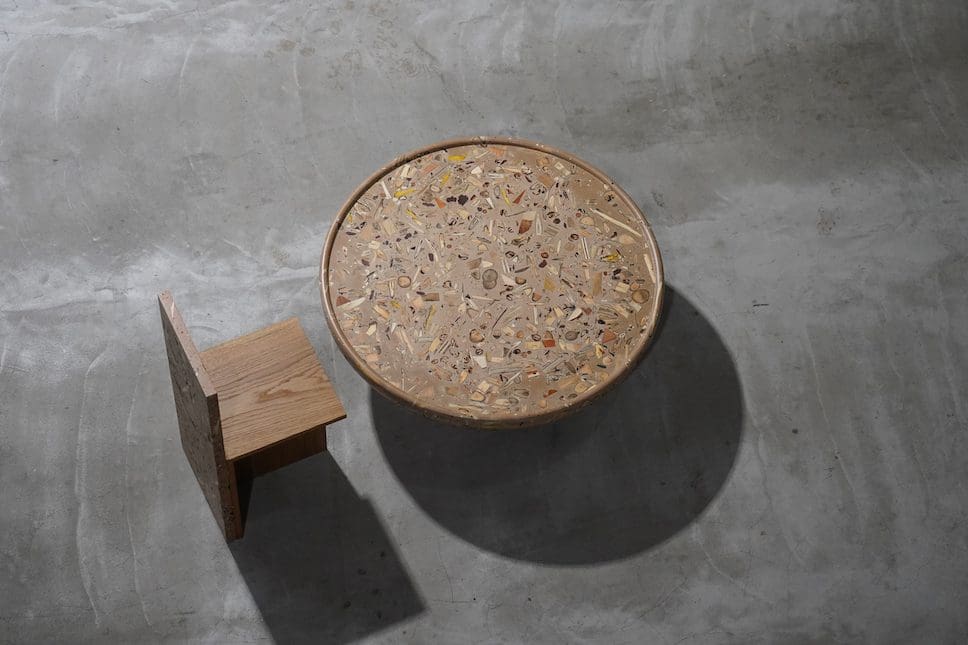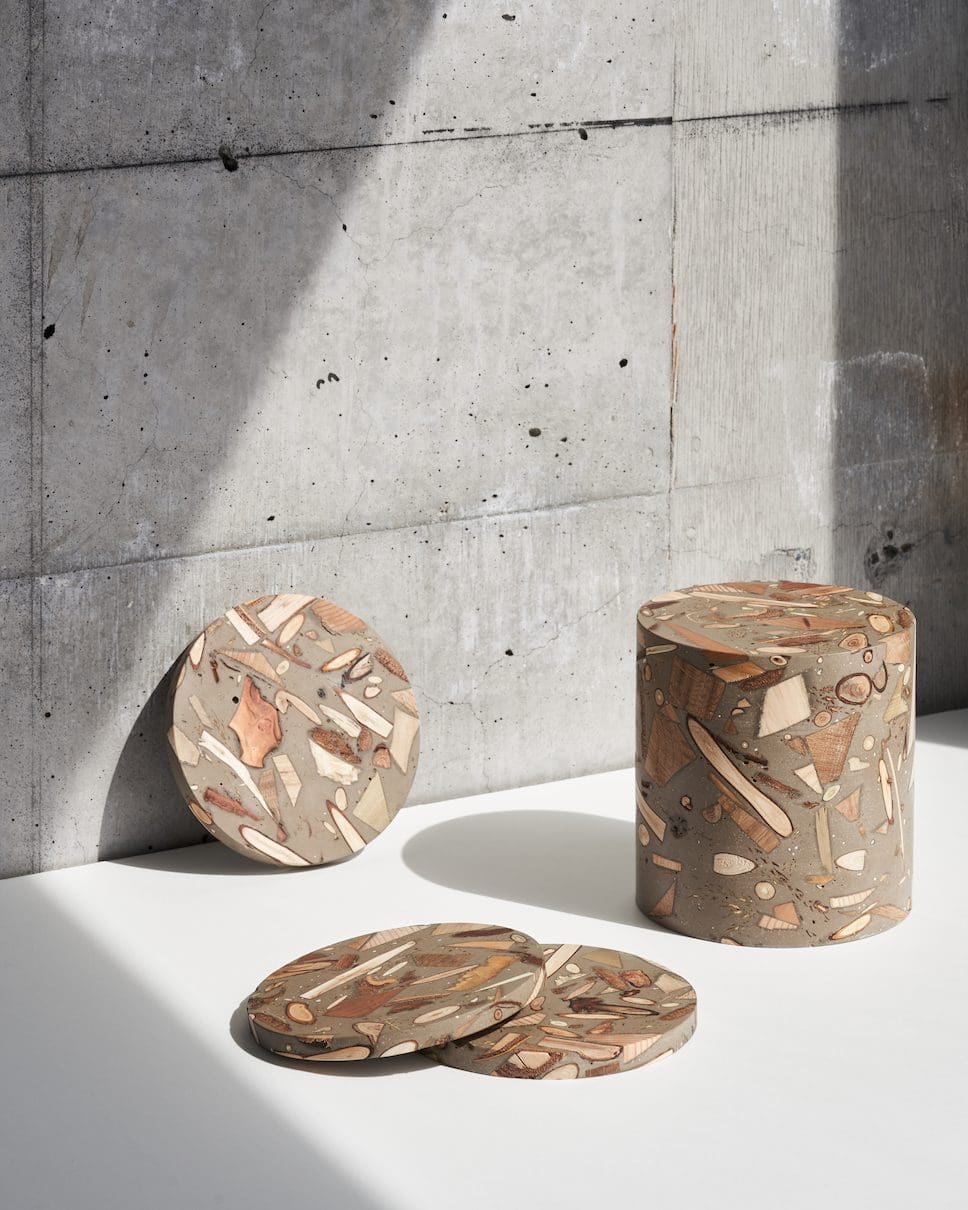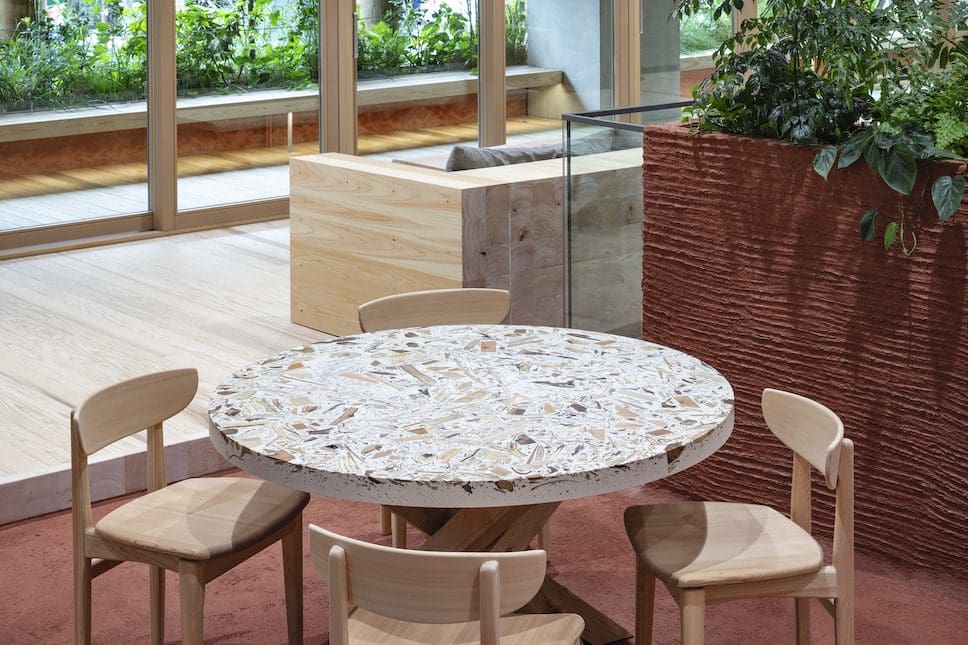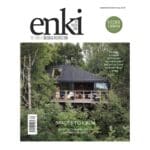
Japanese designer Yuma Kano has creatively worked with forest debris to create ForestBank, a new type of wood that looks to minimise waste.
This pioneering material design makes use of debris from the forest floor that would normally be considered worthless for furniture construction. Formed out of small trees, foliage, bark, seeds, and soil, ForestBank seeks to determine the full value of our local woodlands and in turn it creates an artistic and aesthetically pleasing material out of unutilised debris.
“ForestBank isn’t simply lumber, but a material design that looks to find the variety of value in entire forests,” explains designer Yuma Kano.


The experimental design considers the problems and possibilities around forests, and “by looking at the ubiquitous nature of wood from a different angle and finding new value, a new material that condenses the whole forest has been found,” he adds.
In the making process, debris is mixed with a reactive mineral base and water-based acrylic resin that contains no organic solvents or volatile organic compounds. The resulting material offers unique patterns that showcase fascinating wood grain patterns, and a range of colours that vary depending on the season, land, and conditions of the harvest site.
Natural detailing and complex patterns are achieved with the design of the cross-sections of roots and seeds. These earthy are parts of the forest or woodland that we don’t get to appreciate as they’re usually hidden under soil, but they add an extra depth to this material. Also, the unique patterns can vary depending on the angle and depth of the cut.

“The characteristic yellows and greens are the actual colouring of the trees, which are dyed by bacteria found in nature. The green leaves mixed in change to orange and brown as the seasons change,” describes Yuma Kano.
ForestBank can be shaped using traditional woodworking methods, and applied in fields such as furniture construction and interior design. What’s also notable is that, with further imagination, the forest doesn’t have to be its only source – parks, gardens, and tree-lined streets, as well as scrap wood from wood workshops can also be used. This opens up a whole new opportunity for working with waste materials.

Photos courtesy of Studio Yumakano.
Discover more about Japanese designer Yuma Kano, his studio, and the ForestBank material (as pictured) which was made from forests and woodworking studios in Hida City in Gifu, Japan.
Keep up to date with the latest sustainability news on enki,. We reveal how the One Tree project by SCP inspired 10 designers to create products from the wood from a felled ash tree, and we learn about the launch of the Young Climate Prize by The World Around.
